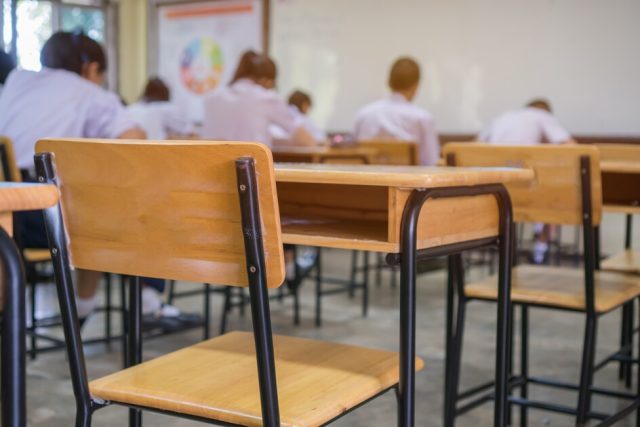[ad_1]
It is tough to bring students back to the classroom once chronic absenteeism rates begin to climb. As more districts struggle with historically high absenteeism, new research suggests they may need a more systemic approach to reengaging students.
A new working paper on Michigan schools released by the Annenberg Center found most school districts with severe attendance problems did not directly address absenteeism when planning school improvement strategies. Among those that did focus on improving attendance, few coordinated their interventions across schools and aligned interventions to combat the specific barriers keeping students from school.
“It’s not that districts don’t care about attendance,” said Jeremy Singer, author of the study and a postdoctoral researcher at Michigan State University. “Attendance is really important, especially right now, but we don’t have the robust organizational systems and routines around attendance the way we do around something like instruction.”
Singer analyzed the improvement plans of 47 of the highest-absentee districts in Michigan. These districts—which have schools ranked in the lowest-performing 5 percent in the state—are part of the state’s Partnership Network, which provides technical support and resources for district improvement initiatives.
“Districts seem to be placing some greater emphasis on things like communicating with families and incentives, and less on deep case-working types of interventions with families,” Singer said.
It can be easy for education leaders to sideline attendance strategies in favor of direct academic interventions because of a focus on test performance, said Stanford University education economist Thomas Dee, who is also studying absenteeism. “I think that’s created blind spots that handicap our efforts at academic recovery.”
Even districts with more data may have difficulty designing interventions based on the causes of absenteeism. A separate study found early warning systems identified students with severe attendance problems, but led to improved attendance only for high-income students—those less likely to face transportation or other systemic challenges in getting to school.
Attendance interventions disconnected
Singer found similar problems in Michigan districts. The most common efforts to improve attendance involved contacting parents when a student missed school and telling parents and students about the importance of attending. More than half of high-absentee districts said they did so frequently. By contrast, less than a third of districts regularly provided help with transportation or adult mentors for students with severe absenteeism.
“If you think about the reasons that families are missing school, informing families about their children’s attendance is certainly important, but it’s not like the primary driver of absenteeism,” Singer said, “so there’s a disconnect.”
Communicating with parents is an important part of improving attendance, but here too, districts need to focus on evidence-based strategies.
“Design matters,” Dee said. For example, studies find that using judgmental or punitive language in communicating with parents can be less effective than warmer language that focuses on shared attendance goals.
“It’s not simply saying attendance has fallen off, but maybe offering classroom peer comparisons,” Dee said. “Giving some parents a sense of, not just that their kid is not doing well, but they’re falling short of a kind of social norm.”
Moreover, interventions that may have proven effective five years ago could be less useful now that schools face significantly larger shares of students with severe attendance problems. Singer found more than 1 in 5 districts he studied who were working to improve attendance planned to use multi-tiered systems of support, a framework that relies on the large majority of students to succeed with standard classroom practices, reserving increasingly intense interventions for smaller groups of students.
But in the lowest-performing Michigan schools, the majority of students missed 10 percent or more of school.
From 2017-18 to 2022-23, Singer found partnership districts had 30 percentage points higher chronic absenteeism than other Michigan districts.
On average, 60 percent of students in these lowest-performing districts missed at least 10 percent of school.
Attendance fell in districts statewide during the pandemic, but partnership districts saw a sharper decline, and the attendance gap between them and the average district in the state has widened. As of 2022-23, less than 85 percent of students in the lowest-performing Michigan schools attended regularly, compared to more than 90 percent attendance in other schools in the state.
Chronic absenteeism has nearly doubled in the U.S.
Michigan is far from alone.
From 2018–19 to 2021–22, chronic absenteeism nearly doubled nationwide, according to a January study Dee published in the Proceedings of the National Academy of Sciences.
Dee found that attendance declined in states with longer school closures during the pandemic, but differences in neither school enrollment loss, COVID-19 case rates, school masking policies, nor declines in students’ mental health accounted for the rise in absenteeism.
Dee thinks the findings may hint at a deeper problem: that extended school disruptions may have “contributed to some norm erosion, some reduction in the sense that regular school attendance should be valued.”
[ad_2]
Source link











